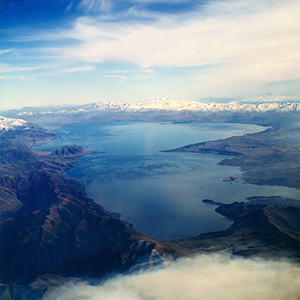Lake Sevan. Past, present, and future state of a unique alpine lake

Published: 23 November 2023
Abstract Views: 412
PDF: 162
HTML: 4
HTML: 4
Publisher's note
All claims expressed in this article are solely those of the authors and do not necessarily represent those of their affiliated organizations, or those of the publisher, the editors and the reviewers. Any product that may be evaluated in this article or claim that may be made by its manufacturer is not guaranteed or endorsed by the publisher.
All claims expressed in this article are solely those of the authors and do not necessarily represent those of their affiliated organizations, or those of the publisher, the editors and the reviewers. Any product that may be evaluated in this article or claim that may be made by its manufacturer is not guaranteed or endorsed by the publisher.
Similar Articles
- Mattia M. Azzella, Rossano Bolpagni, Alessandro Oggioni, A preliminary evaluation of lake morphometric traits influence on the maximum growing depth of macrophytes , Journal of Limnology: Vol. 73 No. 2 (2014)
- Eloy Montero, Gabriela Vázquez, Margarita Caballero, Mario E. Favila, Fernando Martínez-Jerónimo, Seasonal variation of Microcystis aeruginosa and factors related to blooms in a deep warm monomictic lake in Mexico , Journal of Limnology: Vol. 80 No. 2 (2021)
- Roberta Piscia, Simone Tabozzi, Roberta Bettinetti, Liisa Nevalainen, Marina M. Manca, Unexpected increases in rotifer resting egg abundances during the period of contamination of Lake Orta , Journal of Limnology: Vol. 75 No. s2 (2016): Lake Orta: a new lease on life
- Fabian Schroeder, Walter Traunspurger, Kurt Pettersson, Lars Peters, Temporal changes in periphytic meiofauna in lakes of different trophic states , Journal of Limnology: Vol. 71 No. 1 (2012)
- Sanna T. Korkonen, Antti E.K. Ojala, Emilia Kosonen, Jan Weckström, Seasonality of chrysophyte cyst and diatom assemblages in varved Lake Nautajärvi – implications for palaeolimnological studies , Journal of Limnology: Vol. 76 No. 2 (2017)
- Csaba Vadadi-Fülöp, Levente Hufnagel, Climate change and plankton phenology in freshwater: current trends and future commitments , Journal of Limnology: Vol. 73 No. 1 (2014)
- Alfonso Esquivel, Aude Barani, Miroslav Macek, Ruth Ruth Soto-Castor, Celia Bulit, The trophic role and impact of plankton ciliates in the microbial web structure of a tropical polymictic lake dominated by filamentous cyanobacteria , Journal of Limnology: Vol. 75 No. s1 (2016): Proceedings of the 6th National Congress of Limnology
- Jacques Mouthon, Michel Magny, Unprecedented changes in mollusc assemblages of the littoral zone in the two largest peri-Alpine French lakes since the last 4500 years , Journal of Limnology: Vol. 73 No. 1 (2014)
- David A. Salas de León, Javier Alcocer, Vilma Ardiles Gloria, Benjamín Quiroz-Martínez, Estimation of the eddy diffusivity coefficient in a warm monomictic tropical Lake , Journal of Limnology: Vol. 75 No. s1 (2016): Proceedings of the 6th National Congress of Limnology
- María G. Cano, María A. Casco, María C. Claps, Epipelon dynamics in a shallow lake through a turbid-and a clear- water regime , Journal of Limnology: Vol. 75 No. 2 (2016)
<< < 7 8 9 10 11 12 13 14 15 16 > >>
You may also start an advanced similarity search for this article.

 https://doi.org/10.4081/jlimnol.2022.2168
https://doi.org/10.4081/jlimnol.2022.2168





